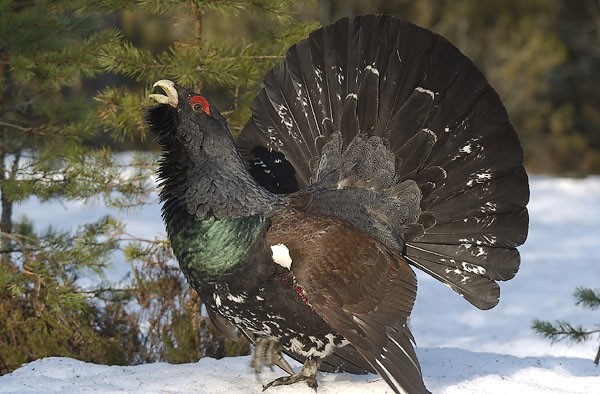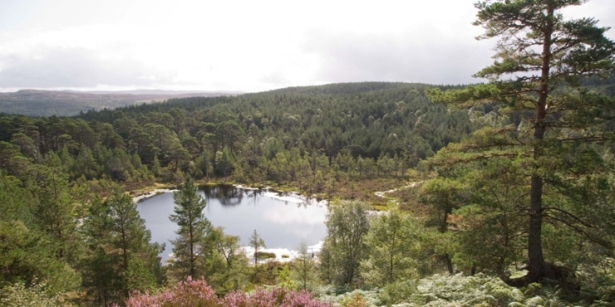As I walked along the track, my pack was becoming lighter. My sleeping bag hadn’t fell through the ever-enlarging rip at the side of my old, but trusty Vango rucksack and my bottle of rum certainly hadn’t fell from the side pocket. Everything was securely strapped in but I had stopped thinking about the walk itself. My mind had wandered from the familiar “Right, I’m at the black bridge so I’m a third of the way there, so probably about half an hour away if the rain holds off. I hope someone’s got the fire going…” to the newly welcoming “Jesus these pines aren’t half sprouting up?!”. Those of you who have visited Bob Scott’s bothy in the last year will know what I’m talking about.
When I first made the walk along the track towards the hideout it was a mere 6 years ago (for some of the guys I now know it would’ve been 36 years ago!) but the change in scenery from then to now throughout the glen is a pleasant one. Among other tree species, there are a number of Scots pines sprouting up, and these are particularly visible along the sides of the track that makes its way along Glen Lui. The clearance of deer from the area has had an obvious impact on the number of trees making it through their infancy and the fact that more native trees are now growing will have nothing but a positive effect on the biodiversity of the area. I can’t begin to imagine what Glen Lui would be like if the Caledonian forest was able to eventually regenerate at a substantial rate, and thus bring with it all its glorious and unique wildlife. Imagine coming head-to-head with a feisty capercaillie on a Friday night walk in…
Of course there are many more areas in which the Caledonian forest is more likely to regenerate successfully, Glen Lui was the chosen example because it is an area I know well and first noticed a difference. Having recently done some research on the matter I realised that there is still an awful long way to go before we start seeing native pine woodland in every wild place, it won’t be within my lifetime anyway. However, an effort can be made now and hopefully there will be an even bigger difference by the time my children visit our country’s wild places.
Below there are two sections, the first describes some of the actions that are currently being taken to help conserve Caledonian Forest and also some which potentially could be taken. The second section evaluates these actions. Those of you interested in the biodiversity conservation of native pine woodland can read on.
Conservation Actions
There are numerous conservation actions that are designed to benefit the biodiversity of Caledonian forest. Many are physical actions that can be undertaken by conservation societies and organisations such as Trees for Life with help from volunteers and in partnership with other organisations. One of the main problems with the conservation of native pine woodland is over grazing. This can be overcome by actions such as building fencing or maintaining and improving existing fencing. Where fencing is not an option, other actions must be taken to ensure the safety of young trees within Caledonian forest sites. There are areas of regeneration which are so small that the chances of the sites reaching a level of stability are very slim. Young trees and seedlings can be protected by barricading them with local brash. The collection of the brash can be a conservation action in itself. By felling non-native trees, this greatly increases the chance of natives surviving. At the same time, there are also opportunities for replanting. By planting native species in and around existing sites, this will decrease fragmentation. Another form of volunteering is to take part in survey work of various kinds. The importance of survey work is paramount, not only at a habitat level i.e. Caledonian forest as a whole, but for the species which inhabit it.
By involving the public in such conservation activities, people become increasingly aware of the problems surrounding the biodiversity of Caledonian forest. Part of the problem is that not enough of the general public know about the importance of native pine woodland. It is such a vast ecosystem and in it has lots of smaller ecosystems which are also very important. By educating people on the importance of biodiversity, Scotland will have a better chance of achieving the targets set out in the policies 2020 Challenge for Scotland’s Biodiversity and Scotland’s Biodiversity: It’s In Your Hands. Education is key at a fundamental level, by introducing biodiversity conservation into the school education curriculum would be a massive step towards securing awareness. This is something which is of course, more expensive, complicated and time consuming than recruiting more volunteers every weekend but in the grand scheme of biodiversity, it is significantly more important.
Another important action which can be taken at a national level is to award more Caledonian forest sites conservation designation. With there being 77 confirmed native pine woodland sites throughout the country and just more than 30 sites protected or partly protected by SSSIs (Site of Special Scientific Interest), there needs to be more pressure to secure more sites with conservation designation. It would also be pertinent for another UK Biodiversity Action Plan to be comprised. With the previous plan now out of date, it is vital this is done.
Evaluation of Actions
To evaluate the effectiveness of volunteering in its many forms, will depend on various factors, one being the quality of work being carried out. Volunteers tend to be people with not much technical experience or expertise but instead with an interest in a particular area of conservation. However, if an organisation can train volunteers and give them practical skills e.g. chainsaw tickets or the skill set to plant a tree correctly then the quality of work becomes much higher and thus more effective. To be able to convince the volunteer to come back is another vital factor. If an organisation can do this, then the volunteer’s interest might turn into passion and with their returning visit, they can bring experience to their work. In the case of deer and sheep fencing, if this is carried out correctly then the effects can be remarkable. The same with barricading seedlings with brash, letting a tree grow through its infancy is very important. Even if a tree survives through grazing, it can severely affect the shape and height of the tree. Species which are naturally tall will develop a smaller bush-like appearance if left to be grazed. Another benefit from using barricades is that the brash will eventually give itself back to the site by providing nutrients and deadwood habitats, which in turn will support the biodiversity of the ground layer in native pine woodland which includes a variety of different wildlife.
Survey work is a very effective tool in conservation, since 2008 Trees for Life have been surveying Dundreggan Estate with much success. Two species which were thought to be extinct in the UK have been discovered through survey work, one being the mining bee which was last recorded in Scotland in 1949 and also the golden horsefly which had previously only been sighted once since 1923. This is proof alone that the value of monitoring Caledonian forest has benefits in all areas of biodiversity conservation. An example of potential survey work would be to investigate the canopy of native pine woodland. In Norway, experiments were undertaken in the canopy of scots pine and nine species which were new to science were discovered. With the canopies of native pine woodland in Scotland not having been studied in similar detail, there are potential undiscovered species as well. If this was to take place and new species found, it would be some of the most important and effective survey work to have ever taken place in Scotland.
As mentioned earlier, less than half of the registered native pine woodland sites are protected by SSSIs. By awarding more sites this status, the chances of reducing isolation between sites will greatly increase. If every Caledonian forest site has this protection, it will present an opportunity for more conservation work to be carried out. If the smaller, less developed sites can eventually reach a reasonable level of stability then expansion becomes much easier. With SSSIs already providing a basis for conservation at the same time as fragmentation still being one of the main problems for native pine woodland, conservation designation has potential to be an even more effective tool.
The effectiveness of raising awareness is something that can depend on scale. For example, by producing and displaying interpretation for the public, this will have a quicker but slightly diluted effect, in terms of numbers, compared to other measures. Interpretation such as talks and lectures held by conservation organisations will only reach people who choose to be there. These people already have an interest in conservation, shown by attending the talk/ lecture. Leaflets or other such interpretation can be displayed at woodland visitor centres, these will be effective but again will only reach a small amount of people. Introducing biodiversity conservation into the education system will raise awareness from a young age and reach a much bigger percentage of people. In the younger generations, it will eventually become a part of their sub conscious in the same way the basics of science are today. This will have a direct impact on the number of people being actively involved in conservation work in the future which makes raising awareness by education a potentially, extremely effective tool.



Did you ever find out why your bag was getting lighter?
Haha aye! The magic of the scots pine was giving me super powers and I was becoming stronger! Cheeky bas! 😉